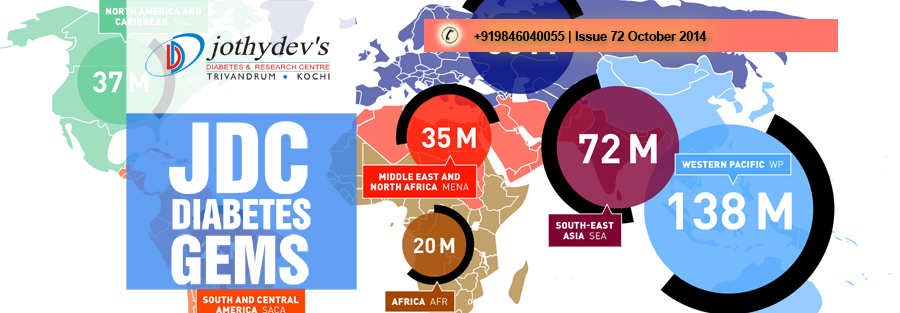
Exercise may not prevent diabetes in those with high Genetic risk
![]()
 New study states that the protective effect of physical activity was diminished in those with a higher genetic risk for the disease. Yann C. Klimentidis, PhD (of the University of Arizona Mel and Enid Zuckerman College of Public Health in Tucson) and colleagues conducted a study among 8,101 self-identified white participants, aged 45 to 64 years, in the Atherosclerosis Risk in Communities (ARIC) study. The researchers identified 821 cases of incident type 2 diabetes. In this cohort, they examined interactions between baseline physical activity and genetics and type 2 diabetes incidence.
New study states that the protective effect of physical activity was diminished in those with a higher genetic risk for the disease. Yann C. Klimentidis, PhD (of the University of Arizona Mel and Enid Zuckerman College of Public Health in Tucson) and colleagues conducted a study among 8,101 self-identified white participants, aged 45 to 64 years, in the Atherosclerosis Risk in Communities (ARIC) study. The researchers identified 821 cases of incident type 2 diabetes. In this cohort, they examined interactions between baseline physical activity and genetics and type 2 diabetes incidence.
![]() The researchers studied interactions of physical activity with each of 65 genetic variants, or single-nucleotide polymorphism (SNPs), associated with type 2 diabetes; a genetic risk score (GRS) comprised of all 65 SNPs, two GRSs comprised of SNPs implicated in insulin resistance and insulin secretion; and GRSs for fasting insulin and glucose.
An interaction of genetic risk with physical activity on incident type 2 diabetes appears to be driven principally through genetic risk to insulin resistance. Data also showed that this interaction was more pronounced in women (P=.0025) compared with men (P=.46).
The researchers studied interactions of physical activity with each of 65 genetic variants, or single-nucleotide polymorphism (SNPs), associated with type 2 diabetes; a genetic risk score (GRS) comprised of all 65 SNPs, two GRSs comprised of SNPs implicated in insulin resistance and insulin secretion; and GRSs for fasting insulin and glucose.
An interaction of genetic risk with physical activity on incident type 2 diabetes appears to be driven principally through genetic risk to insulin resistance. Data also showed that this interaction was more pronounced in women (P=.0025) compared with men (P=.46).
![]() We conclude that although physical activity appears to have an overall protective effect on type 2 diabetes, this putative effect is weakest among individuals with high genetic risk for type 2 diabetes and IR.
We conclude that although physical activity appears to have an overall protective effect on type 2 diabetes, this putative effect is weakest among individuals with high genetic risk for type 2 diabetes and IR.
Read More
For enquiries info@jothydev.net.
Please visit: jothydev.net | research.jothydev.com | diabscreenkerala.net | jothydev.com/newsletter
